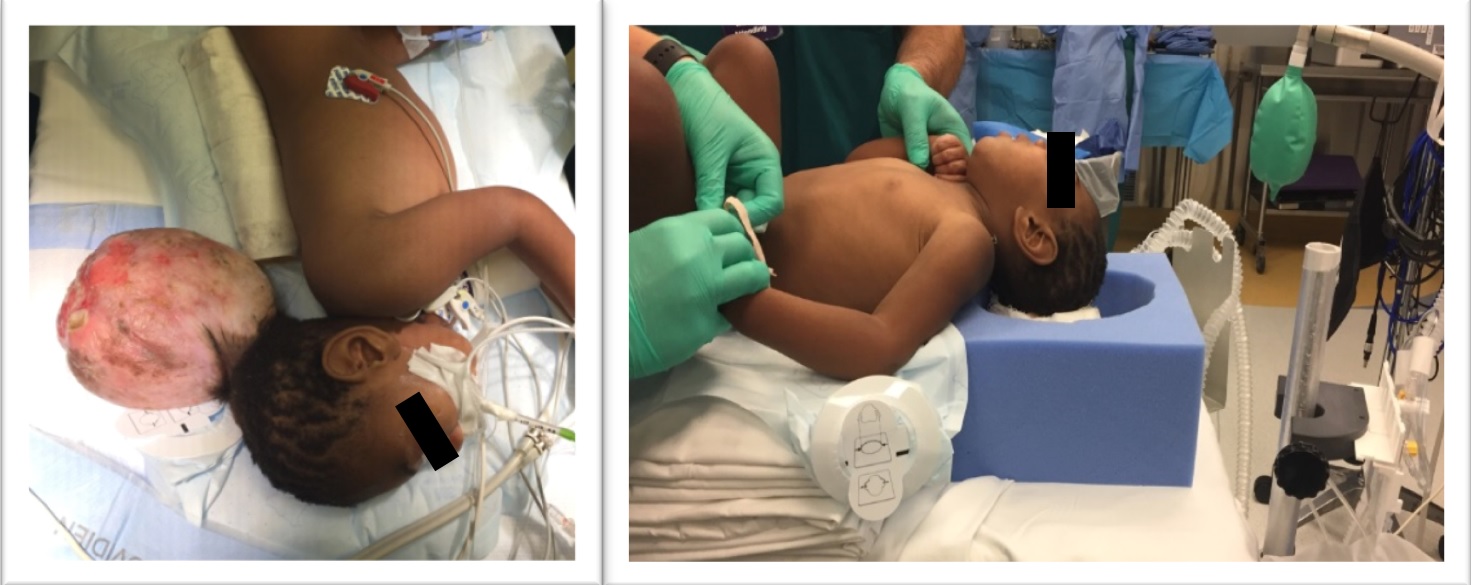AIR-18
Safe Airway Management in Massive Occipital Encephaloceles: A Practical Approach
Careskey M, Kandil A, Previte J
Cincinnati Children's Hospital, Cincinnati, OH, USA
Encephalocele, a neural tube defect of the cranium, is a rare condition that presents as an outpouching of a meninges-lined sac filled with CSF. These masses can vary in size and location, and treatment involves resection to curb further enlargement, meningitis and neurological decline. Intervention typically occurs in the neonatal period. Those afflicted have challenging airways, and careful consideration to positioning is essential for a good outcome. Several positioning strategies have previously been reported: lateral position, hanging the patient’s head over surgical table, and having assistants elevate the baby’s body while anesthesiologist manages the airway. Each of these strategies pose risks of compression or disruption of the encephalocele membrane , unsteadiness and bad airway ergonomics. Additionally, these patients often present with with midface hypoplasia.. We therefore propose that the safest approach to airway management is to use a collection of materials commonly available in operating rooms to support a natural and familiar supine airway position.
We recently cared for a 3-year-old boy who presented from home for surgical resection of a massive posterior encephalocele. After collaborating with our neurosurgeons, we achieved our ideal airway positioning in a simple fashion. We repurposed a medium-sized GentleTouch® Prone Positioning Pillow (Mizuho OSI, Union City, CA) with a large cut-out space to accept the contents of our patient’s encephalocele such that the mass could rest gently without compression or free-hanging tension. The patient’s body rested on a stack of blankets such that in combination with the reservoir from the cut-out pillow, airway positioning appeared routine. This provided enough structural support to emulate sniffing position without perturbing the mass and without reliance on colleagues for patient support, as previously described.
We proceeded then with an uneventful inhalation induction with sevoflurane and oxygen, easy mask ventilation and intubation with grade II vocal cord visualization with a Miller 2 blade.
Airway management in patients with encephaloceles requires thoughtful evaluation of the risks and benefits of several positioning options. We encourage those caring for these patients to consider creating a familiar supine airway position using commonly-found materials, while minimizing potential trauma to the encephalocele, as the safest approach to airway management of these delicate patients.
1) Goel, V., et al . (2010). Management of neonatal giant occipital encephalocele: Anaesthetic challenge. Indian Journal of Anaesthesia, 54(5), 477.
2) Walia, B.,, et al. (2005). Giant Occipital Encephalocele. Med J Armed Forces India, 61(3), 293-294.
3) Yιldιrιm, Z. B., et al. (2011). Airway management for occipital encephalocele in neonatal patients: A review of 17 cases. Journal of Neurosciences in Rural Practice, 2(2), 159-161. doi:10.4103/0976-3147.83583
Top












